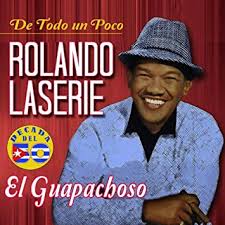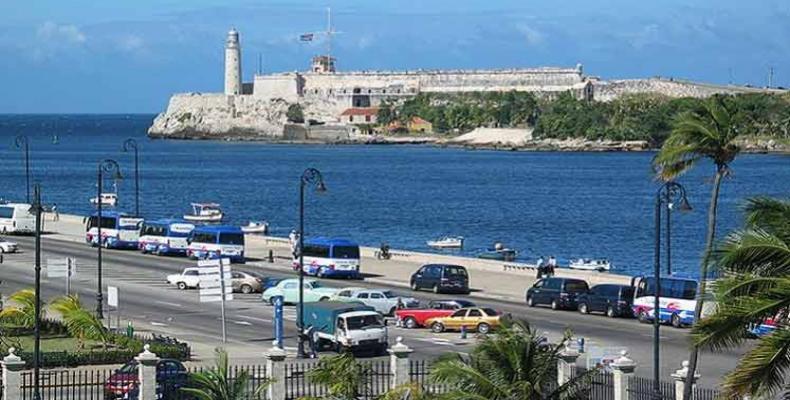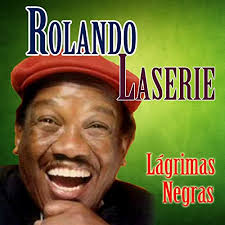
ROLANDO LASERIE, “EL GUAPACHOSO” O “EL GUAPO DE LA CANCION”, POPULAR CANTANTE CUBANO. PHOTOS/VIDEOS.
Rolando Laserie Rodríguez, mas conocido como “Guapo de la Canción” y “El Guachaposo” fue un popular cantante cubano de boleros, guarachas, son cubano, son montuno, tangos y bolero son.
Su registro de nacimiento revela cuatro nombres: William Newton Calasanz Rolando Laserie Rodriguez, que ya da mucho de qué hablar, pero el mundo lo conoció simplemente como Rolando Laserie, nació en Mata, Villa Clara, Cuba el 27 de Agosto de 1923, siendo el menor de ocho hermanos. Creció entre academias de baile, desarrolló la magia en sus pies, que se movían al ritmo de la música, con la alegría que hasta su último día lo caracterizó. Es así como descubre su gusto por la música, justo en el momento en que Luis, su hermano mayor, le enseña a tocar el timbal.
Aprendió a tocar los timbales a los 9 años. En los inicios de su vida profesional alternó su condición de músico con el oficio de zapatero. Actuaba de forma esporádica como percusionista en la Banda Municipal de Santa Clara.
CARRERA ARTISTICA
Bautizado como “El guapo de la canción”, por el conductor de radio Germán Pinelli, quien quedó sorprendido por la energía que lo caracterizaba en el escenario, su historia se inició cuando viajó a la Habana, Cuba. En una entrevista para The New Herald en 1995 dijo: “(…) siempre estaba con mi guayaberita y mi lacito por si me venían a buscar. Cuando venían las compañías de teatro La Caridad, La Orquesta tocaba en el vestíbulo y a mí me ponían una silla y un cajoncito para tocar los timbales con los músicos de la banda municipal de Santa Clara, yo tenía unos diez años”. Laserie sabía de su energía, pues había nacido para la música, para enamorar a las personas con su voz en cada uno de sus boleros. Aunque le costó trabajo alcanzarlo, estaba seguro de que ese momento llegaría.
En 1943, con solo 20 años de edad se presentó con la orquesta de Arcaño y sus Maravillas en sustitución de Miguelito Cuní.
En 1946 viaja a La Habana, y se desempeña como percusionista en la orquesta de los Hermanos Palau y colabora eventualmente con diferentes agrupaciones. Tiempo más tarde, pasó a ser timbalero y coro en la Banda Gigante de Benny Moré.
Ernesto Duarte Brito junto los hermanos Álvarez Guedes, propietarios del sello discográfico Gema, le hicieron una producción de boleros que no tuvo la proyección que se esperaba. El disco fue arreglado por Duarte, con la característica sonoridad de jazz band cubana.
Mentiras tuyas, grabado en 1957 y de la autoría de Mario Fernández Porta, fue definitorio en su manera de cantar, con incursiones coloquiales y diálogos. A lo largo de su carrera grabó más de treinta discos.
Desde entonces, Laserie tuvo un crecimiento impresionante. Dos años después ya competía en popularidad con el que había sido su jefe, el gran Benny Moré, y sabía que su decisión al escoger la música no había sido en vano. Gozaba de hacer lo que más amaba en el mundo y nunca dudó de su talento. Dicen que los grandes artistas no le temen a reinventarse y este fue el caso de él. La música avanzaba y Rolando Laserie avanzaba junto a ella, explorando ritmos como la guaracha, el son montuno, el bolero y el son. Nunca se quedó encasillado en algún ritmo, lo único le importaba era hacer música.
LASERIE SALE DE CUBA
Con el advenimiento de la Revolución de 1959 emigró primero a Caracas, Venezuela, y después a Miami, donde siguió su carrera, contando con una buena parte de su público.
El 26 de octubre de 1960, cuando triunfó el gobierno de Fidel Castro, Laserie se encontraba en lo más alto de su carrera, con más de treinta discos grabados y una gran popularidad en la isla que lo vio nacer. Sin embargo, en medio de su alegría se produjo una enorme tristeza, puesto que llegó a presentir las represiones que vendrían por parte del gobierno, así que decidió dejar su tierra. Cuenta en una de sus entrevistas el maestro Bebo Valdés, amigo del maestro Rolando Laserie, lo siguiente: “Cuando salimos de Cuba en el mismo avión, nos juramos que nunca íbamos a volver bajo el régimen actual. Él cumplió, ahora queda que yo cumpla”. Y la promesa se sostuvo hasta el día de la muerte de cada uno.
En los años ’60 y ’70 actuó asiduamente en Argentina, recordándose su participación en el ciclo televisivo Al Estilo de Mancera, conducido por Pipo Mancera en canal 11 de Buenos Aires, en 1978.
VIDA PERSONAL
De su vida personal se sabe muy poco, amó solo a una mujer que fue la dulce Tita Borgianno con quien nunca tuvo hijos. Estuvieron juntos por más de cincuenta años.
Falleció en Coral Gables, Florida, el 22 de noviembre de 1998 por un agudo infarto de miocardio.
Rolando Laserie fue un cantante que dejó una huella profunda en cada uno de sus familiares y amigos, su disciplina y el amor por la música lo llevaron lejos. El escritor y musicólogo Guillermo Cabrera Infante lo recordaba caminando con su boina “estilo panamá”, vestido todo de blanco, su traje de la suerte.


ROLANDO LASERIE, “THE GUAPACHOSO” OR “THE HANDSOME OF THE SONG”, POPULAR CUBAN SINGER/ VIDEOS
Rolando Laserie Rodríguez, better known as “Guapo de la Canción” and “El Guachaposo” was a popular Cuban singer of boleros, guarachas, son cubano, son montuno, tangos and bolero son.
His birth record reveals four names: William Newton Calasanz Rolando Laserie Rodriguez, who is already giving a lot to talk about, but the world knew him simply as Rolando Laserie, was born in Mata, Villa Clara, Cuba on August 27, 1923, being the youngest of eight siblings. He grew up among dance academies, he developed the magic in his feet, which moved to the rhythm of the music, with the joy that characterized him until his last day. This is how he discovered his taste for music, just at the moment when Luis, his older brother, taught him to play the timbal.
He learned to play the timbales at the age of 9. At the beginning of his professional life he alternated his role as a musician with the shoemaker’s trade. He performed sporadically as a percussionist in the Santa Clara Municipal Band.

ARTISTIC CAREER
Baptized as “The handsome man of the song” by radio host Germán Pinelli, who was surprised by the energy that characterized him on stage, his story began when he traveled to Havana, Cuba. In an interview for The New Herald in 1995 he said: “(…) I was always with my guayabera and my bow in case they came to look for me. When the La Caridad theater companies came, the Orchestra played in the lobby and they gave me a chair and a small box to play the timbales with the musicians of the Santa Clara municipal band, I was about ten years old.” Laserie knew of his energy, because he was born for music, to make people fall in love with his voice in each of his boleros. Although it was hard for him to achieve it, he was sure that his moment would come.
In 1943, at only 20 years of age, he performed with the Arcaño y sus Maravillas orchestra, replacing Miguelito Cuní.
In 1946, he traveled to Havana, and worked as a percussionist in the Palau Brothers’ orchestra and occasionally collaborated with different groups. Later, he became a timpanist and chorus player in Benny Moré’s Banda Gigante.
Ernesto Duarte Brito and the Álvarez Guedes brothers, owners of the Gema record label, made a production of boleros for him that did not have the projection that was expected. The album was arranged by Duarte, with the characteristic Cuban jazz band sound.
Mentiras tuyas, recorded in 1957 and written by Mario Fernández Porta, was defining in his way of singing, with colloquial incursions and dialogues. Throughout his career he recorded more than thirty albums.
Since then, Laserie had an impressive growth. Two years later he was already competing in popularity with the man who had been his boss, the great Benny Moré, and he knew that his decision to choose music had not been in vain. He enjoyed doing what he loved most in the world and never doubted his talent. They say that great artists are not afraid to reinvent themselves and this was the case with him. Music was advancing and Rolando Laserie advanced with it, exploring rhythms such as guaracha, son montuno, bolero and son. He never remained pigeonholed in any rhythm, the only thing that mattered to him was making music.
LASERIE LEAVES CUBA
With the advent of the 1959 Revolution he emigrated first to Caracas, Venezuela, and then to Miami, where he continued his career, counting on a good part of his public.
On October 26, 1960, when Fidel Castro’s government triumphed, Laserie was at the height of his career, with more than thirty recorded albums and great popularity on the island where he was born. However, in the midst of his joy came great sadness, since he came to sense the repression that would come from the government, so he decided to leave his homeland. In one of his interviews, maestro Bebo Valdés, a friend of maestro Rolando Laserie, recounts the following: “When we left Cuba on the same plane, we swore to each other that we would never return under the current regime. He kept his promise, now it’s up to me to keep it.” And the promise was kept until the day of each of our deaths.
In the 60s and 70s he performed frequently in Argentina, and we can remember his participation in the television show Al Estilo de Mancera, hosted by Pipo Mancera on Channel 11 in Buenos Aires, in 1978.
PERSONAL LIFE
Very little is known about his personal life. He only loved one woman, the sweet Tita Borgianno, with whom he never had children. They were together for more than fifty years.
He died in Coral Gables, Florida, on November 22, 1998 from an acute myocardial infarction.
Rolando Laserie was a singer who left a deep mark on each of his family and friends. His discipline and love for music took him far away. The writer and musicologist Guillermo Cabrera Infante remembered him walking with his Panama-style beret, dressed all in white, his lucky suit.

Agencies/ Wiki/ El Espectador/ Extractos/ Excerpts/ Internet Photos/ YouTube/ Arnoldo Varona.
THE CUBAN HISTORY, HOLLYWOOD.
www.TheCubanHistory.com



